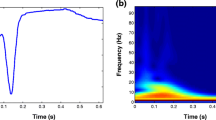Abstract
QT dispersion (QTd) has not proven to be a useful marker derived from the 12-leadelectrocardiogram (ECG) for stratification of patients at risk for sudden cardiac death. To overcomeits methodological shortcomings, novel ECG variables of T wave morphology have been proposed. The total cosineR-to-T (TCRT), T wave morphology dispersion, T wave loop dispersion, normalized T wave loop area, aswell as absolute and relative T wave residuum evaluating non-dipolar ECG signal contents were evaluated in twoclinical studies involving post myocardial infarction (MI) patients and US veterans with cardiovasculardisease.
In 280 post MI patients with 27 events over a mean follow-up of 32 months, TCRT and T wave loop dispersionwere independent predictors of mortality. In 813 male US veterans with cardiovascular disease the absolute andrelative T wave residua were independent predictors of patient risk during a long-term follow-up of more than 10years. On Cox regression analysis, age, presence of left ventricular hypertrophy (LVH) and leftventricular ejection fraction (LVEF) were also predictors of survival. The latter study in US veteranstherefore was the first to demonstrate that a novel parameter characterizing heterogeneity of ventricularrepolarization within the 12-lead surface ECG permits risk stratification in patients with cardiovasculardisease.
All of the ECG variables are easily accessible from digital 12-lead surface ECG recordings using customcomputer programs. They may prove useful to identify risk patients that benefit from the implantablecardioverter-defibrillator (ICD).
Similar content being viewed by others
References
Day CP, McComb JM, Campbell RW.QT dispersion: An indication of arrhythmia risk in patients with long QT intervals. Br Heart J 1990;63:342–344.
Day CP, McComb JM, Campbell RW. QT dispersion in sinus beats and ventricular extrasystoles in normal hearts. Br Heart J 1992;67:39–41.
Hii JT, Wyse DG, Gillis AM, Duff HJ, Solylo MA, Mitchell LB. Precordial QT interval dispersion as a marker of torsade de pointes. Disparate effects of class Ia antiarrhythmic drugs and amiodarone. Circulation 1992;86:1376–1382.
Barr CS, Naas A, Freeman M, Lang CC, Struthers AD. QT dispersion and sudden unexpected death in chronic heart failure. Lancet 1994;343:327–329.
Batchvarov V, Malik M. Measurement and interpretation of QT dispersion. Prog Cardiovasc Dis2000;42:325–344.
Kors JA, van Herpen G. Measurement error as a source of QT dispersion: A computerised analysis. Heart 1998;80:453–458.
Kors JA, van Herpen G, van Bemmel JH. QT dispersion as an attribute of T-loop morphology. Circulation1999;99:1458–1463.
Savelieva I, Yi G, Guo X, Hnatkova K, Malik M. Agreement and reproducibility of automatic versus manual measurement of QT interval and QT dispersion. Am J Cardiol 1998;81:471–477.
Zabel M, Klingenheben T, Franz MR, Hohnloser SH. Assessment of QT dispersion for prediction of mortality or arrhythmic events after myocardial infarction: Results of a prospective, long-term followup study. Circulation 1998;97:2543–2550.
Brendorp B, Elming H, Jun L, Kober L, Malik M, Jensen GB, Torp-Pedersen C. QT dispersion has no prognostic information for patients with advanced congestive heart failure and reduced left ventricular systolic function. Circulation 2001;103: 831–835.
Kuo CS, Reddy CP, Munakata K, Surawicz B. Mechanism of ventricular arrhythmias caused by increased dispersion of repolarization. Eur Heart J1985;6(Suppl D):63–70.
Kuo CS, Munakata K, Reddy CP, Surawicz B. Characteristics and possible mechanism of ventricular arrhythmia dependent on the dispersion of action potential durations. Circulation 1983;67: 1356–1367.
Abildskov JA, Burgess MJ, Urie PM, Lux RL, Wyatt RF. The unidentified information content of the electrocardiogram. Circ Res 1977;40:3–7.
Abildskov JA, Green LS, Evans AK, Lux RL. The QRST deflection area of electrograms during global alterations of ventricular repolarization. J Electrocardiol1982;15:103–107.
Acar B, Yi G, Hnatkova K, Malik M. Spatial, temporal and wavefront direction characteristics of 12–lead T-wave morphology. Med Biol Eng Comput1999;37:574–584.
Zabel M, Acar B, Klingenheben T, Franz MR, Hohnloser SH, Malik M. Analysis of 12–lead T-wave morphology for risk stratification after myocardial infarction. Circulation 2000;102:1252–1257.
Wilson FN, Macleod AG, Barker PS, Johnston FD. Determination and the significance of the areas of the ventricular deflections of the electrocardiogram. Am Heart J 1934;10:46.
Malik M, Acar B, Gang Y, Yap YG, Hnatkova K, Camm AJ. QT dispersion does not represent electrocardiographic interlead heterogeneity of ventricular repolarization. J Cardiovasc Electrophysiol2000;11:835–843.
Brody DA, Mirvis DM, Ideker RE, Cox JJ, Keller FW, Larsen RA, Bandura JP. Relative dipolar behavior of the equivalent T wave generator: Quantitative comparison with ventricular excitation in the rabbit heart. Circ Res 1977;40:263–268.
Tsunakawa H, Hoshino K, Kanesaka S, Harumi K, Okamoto Y, Teramachi Y, Musha T. Dipolarity and dipole location during QRS and T waves in normal men estimated from body surface potential distribution. Jpn Heart J 1985;26:319–334.
Zabel M, Malik M, Hnatkova K, Papademetriou V, Pittaras A, Fletcher RD, Franz MR. Analysis of a T-wave morphology from the 12–lead electrocardiogram for prediction of long-term prognosis in male US veterans. Circulation 2002;105:1066–1070.
Author information
Authors and Affiliations
Rights and permissions
About this article
Cite this article
Zabel, M., Malik, M. Practical Use of T Wave Morphology Assessment. Card Electrophysiol Rev 6, 316–322 (2002). https://doi.org/10.1023/A:1016353714372
Issue Date:
DOI: https://doi.org/10.1023/A:1016353714372




